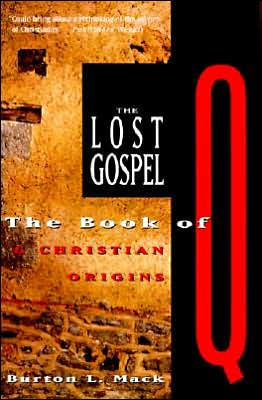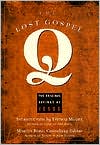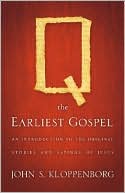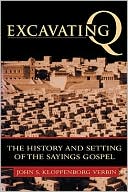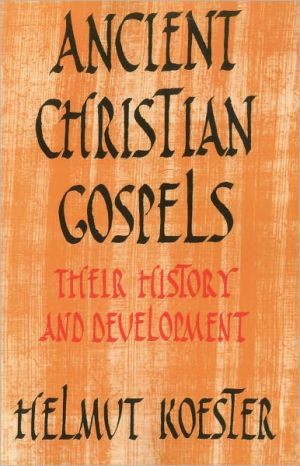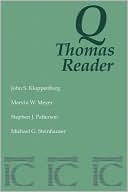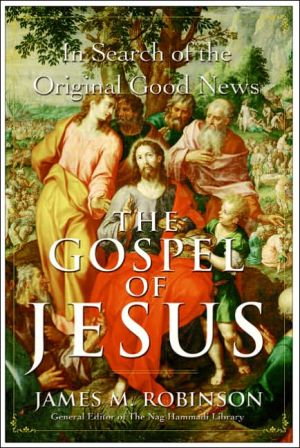Lost Gospel: The Book of Q and Christian Origins
The first book to give the full account of the lost gospel of Jesus' original followers, revealing him to be a Jewish Socrates who was mythologized into the New Testament Christ.
Search in google:
The first book to give the full account of the lost gospel of Jesus' original followers, revealing him to be a Jewish Socrates who was mythologized into the New Testament Christ.
Chapter One Finding the Shards\ In modern times adventurers, seekers of treasure, and archeologists have discovered many ancient writings in ruins, caves, and old monastery libraries. Some of these finds have been early manuscripts of well-known writings, such as the biblical texts discovered at St. Catherine's monastery in the 1850s or at Qumran in the 1940s. Others have been texts of writings known only by title because of some mention by an ancient author, but were thought to have been lost, forgotten, or burned in the creedal wars of the fourth and fifth centuries. Examples are the discovery of the Epistle of Barnabas at St. Catherine's in 1859 and the Didache, or "Teaching" (of the Twelve Apostles), in the patriarchal library of Constantinople in 1875. Others have come as complete surprises, such as many of the Dead Sea Scrolls from the ancient library at Qumran and the Coptic-Gnostic library at Nag Hammadi discovered during the 1940s.\ In the quest to reconstruct the past, every new textual discovery has been greeted with some measure of enthusiasm and many finds have created sensations. New texts are exciting to scholars because of their promise of new knowledge and enticing to others because of a sense that hidden secrets are about to be disclosed. In the case of Q's discovery, however, there has been no announcement, little public excitement, and no sense that anything secret was about to be revealed. That is because Q was not discovered in some ancient cache. A manuscript of Q entitled "The Sayings of Jesus" did not suddenly come to light. Instead, the bits and pieces of this ancient writing werefound scattered about in the gospels of the New Testament, andthese were very familiar texts. It was by chance, in the course of tracking down the layered traditions of these gospels, that Q slowly emerged. Its existence at the bedrock of the Jesus traditions gradually forced itself upon scholars who hardly noticed the momentous significance of their discovery because the material was already so well known.\ The idea that there must have been a text like Q was first thought of over 150 years ago, but its recognition as a document with its own distinctive history had to wait for the present generation of scholars. One reason it took so long is that New Testament scholars have been haunted by the desire to reconstruct the "life" of Jesus. They were therefore preoccupied with the eventful aspects of the gospels, worried about their miraculous features, not about the teachings which they took for granted. Another reason is that, since Q referred to a written source that was used in slightly different ways by two independent authors (Matthew and Luke), reconstructing a single, unified text for study and discussion was at first thought to be impossible. And a third reason is that many New Testament scholars resisted the idea of Q because they thought there was no other example of the genre in early Christian literature and thus could not imagine why early Christians would have written such a text.\ However, as the comparative study of the gospels unfolded, the nature of Jesus' teaching eventually became a critical question. Ways to reconstruct the text of Q were developed. Another example of the genre was found, the sayings gospel known as the Gospel of Thomas. And scholars finally turned to questions about Q's composition and content. A brief exploration of the major moments in this long history of scholarship helps in understanding how and why Q finally emerged from the pages of the narrative gospels to challenge their own account of Christian origins. In this chapter the story of Q's discovery as a written text will be told. In the next three chapters the current scholarly excitement about recognizing Q's genre and importance for reconstructing the history of Christian origins will be described.\ The story starts early in the nineteenth century, the century known for its quest for the historical Jesus. The quest was made possible by the rational methods of historical criticism learned in the age of enlightenment, but it was driven by a thoroughly romantic Protestant obsession. Protestant critique of the Catholic church claimed that Catholic religion was a pagan adulteration of true Christianity. In order to define true Christianity, Protestant reformers at first located its truth in the scriptures as a way to counter Catholic emphasis on postbiblical tradition as equal in importance for Christian faith and practice. But as the enlightenment dawned, other strategies commended themselves. What if Catholic Christianity could be shown as a historical development that veered away from the original intentions of Jesus and the earliest forms of Christian community and faith? Then the Protestant case would be made. The essence of Christianity would be obvious from the pristine purity of its original form, and Protestant claims to represent the true form of Christianity would have to be acknowledged. So the quest for the historical Jesus was motivated by a Protestant desire to leapfrog over the entire history of Catholic Christianity and land at the beginning where, as it was imagined, the foundations of Christianity had been laid in the life and purpose of its founder.\ The problem with this undertaking was that the only records of Jesus' life were the four gospels of the New Testament. At first Protestant scholars thought it enough to note the contrast between the Jesus of the gospel accounts and the history of "pagan" iconography and worship in the Catholic religion. But Catholics had no trouble with the gospels. They had always read them as records of the very events that inspired their religion. Mary was there and the story of the virgin birth. The miracles were there, both in the public appearance of Jesus and in the great events that confirmed the significance of his life — the baptism, transfiguration, crucifixion, and resurrection. Peter was there, as were the twelve apostles, Mary Magdalene, and the great commission to make disciples of all the nations. And there was ample instruction in faith, forgiveness, obedience, and the final judgment. So Protestant scholars had to take another look. Upon a closer reading of the gospels, they had to agree that the gospels, contained a good bit of mythology and too many miracles for comfort. This, then, set the agenda for more than a hundred years of detailed investigation. The goal of the quest would be to get behind the myths and miracles of the gospels and reconstruct the story of the man "as he really was."
Prologue The Challenge1Pt. IThe Discovery of a Lost Gospel1Finding the Shards152An Uncommon Wisdom293Removing the Patina414Galilee Before the War51Pt. IIThe Text of the Lost Gospel5The Book of Q71Pt. IIIThe Recovery of a Social Experiment6Dancing to the Pipes1057Singing a Dirge1318Claiming a Place1499Coming to Terms171Pt. IVThe Reconception of Christian Origins10Jesus and Authority19111Mythmaking and the Christ20712Bishops and the Bible22713Christians and Their Myth237Epilogue The Consequences245Appendix A: Early Christian Literature259Appendix B: Q Segments260Select Bibliography263Index269
